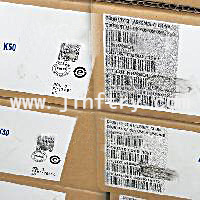What is a CR123A Battery? CR123A VS CR123

What is a CR123A Battery?
CR123A batteries are compact, cylindrical power sources made of lithium manganese dioxide. Known for their energy efficiency, they have a nominal voltage of 3V and are widely used in devices that require high power output over a relatively short period. Their compact size and high capacity make them popular in photography equipment, security gadgets, and tactical flashlights. They are designed to deliver steady performance, even in extreme temperatures, which makes them suitable for outdoor use and high-drain applications.
CR123A vs CR123
The terms CR123A and CR123 often create confusion among consumers. However, they refer to the same type of battery. The "A" in CR123A is a manufacturer’s designation that does not impact the battery's function or size. Both terms can be used interchangeably, and both types share the same size, voltage, and capacity. Users can confidently replace a CR123A with a CR123, or vice versa, without performance issues.CR123A Specifications
- Size: Approximately 34.5mm in length and 17mm in diameter.
- Voltage: Nominal 3V, which suits many electronic devices.
- Capacity: Typically between 1400 and 1600 mAh, providing significant energy density for compact gadgets.
- Chemistry: Lithium manganese dioxide, offering high energy output and long shelf life.
- Shelf Life: Up to 10 years, allowing for long-term storage without significant power loss.
- Weight: Lightweight at approximately 17 grams
- Easy to carry and use in portable devices.
Equivalent of CR123A
When looking for batteries that can replace a CR123A, you have several options:- 16340 Battery: This rechargeable alternative has a similar size but a higher voltage (3.7V). Check if your device supports it before switching.
- RCR123A: Essentially a rechargeable version of the CR123A, with voltage typically ranging from 3.2V to 3.7V.
- 123A Lithium Battery: Almost identical in specifications and functionality.
- CR2 Battery: Smaller in size, with a different capacity and voltage. While not a perfect match, some devices might accommodate it.
- 15270 Battery: Less common but can sometimes be used as a replacement.
- Panasonic Industrial CR123A: Known for high performance and reliability, ideal for high-drain devices.
Features of CR123A Battery
CR123A batteries come with specific features that make them reliable:- High Energy Density: Delivers more power in a compact size.
- Stable Voltage: Provides consistent 3V output throughout most of its usage.
- Lightweight Design: Weighs only around 17 grams, adding minimal weight to devices.
- Wide Temperature Range: Functions well in extreme temperatures from -40°C to 60°C.
- Long Shelf Life: Holds power for up to 10 years when stored correctly.
- Leak-Resistant: Built with quality materials to prevent leakage and ensure device safety.
- Fast Power Response: Supplies quick power delivery for high-demand devices like cameras and tactical lights.
How Long Does a CR123A Battery Last?
The lifespan of a CR123A battery depends on the device and its energy demands. In low-drain devices like smoke detectors, a CR123A battery can last up to one or two years. In high-drain devices, such as tactical flashlights or camera equipment, the battery life ranges from a few hours to several days of intermittent use. The exact duration also varies based on the brand and conditions of use. One of the key strengths of CR123A batteries is their long shelf life of up to 10 years, making them reliable even after long periods of storage.Are CR123A Batteries Easy to Find?
Yes, CR123A batteries are readily available in most places. You can find them at electronics stores, large retailers, and online marketplaces. Brands like Duracell, Panasonic, and Energizer manufacture CR123A batteries, ensuring a steady supply. Their popularity stems from their use in everyday items like security cameras and flashlights, which helps keep them widely stocked. Specialty stores that sell photography and outdoor gear also tend to carry CR123A batteries since they’re trusted for high-performance devices.For those who prefer shopping online, platforms such as Amazon, eBay, and specialized battery retailers offer these batteries in single units or multi-packs. This convenience means you don’t have to search hard to find replacements or stock up for future use.
Can I Use CR2 Instead of CR123A?
Although CR2 and CR123A batteries are similar in their lithium chemistry, they are not directly interchangeable. CR2 batteries are smaller and may not fit in devices designed for CR123A batteries. Additionally, they have different voltage and capacity specifications. Using a CR2 battery in place of a CR123A could result in inadequate power supply or damage to the device. Always refer to the device’s manual before substituting any battery type.Can CR123A Batteries Be Recharged?
Standard CR123A batteries are not designed for recharging and attempting to recharge them can be hazardous. Recharging non-rechargeable lithium batteries can lead to leaks, ruptures, or even explosions. If rechargeable options are desired, the RCR123A or 16340 batteries are available. They are designed to be recharged safely and can be used in devices that support them. It’s important to note that rechargeable versions often have slightly different voltage outputs, so ensure device compatibility before use.Do Lithium Batteries Go Bad If Not Used?
Lithium batteries, like the CR123A, have an impressive shelf life of up to 10 years if stored correctly. However, they can degrade over time due to natural chemical reactions within the cell. Even if not in use, lithium batteries can lose a small portion of their charge yearly.To extend the shelf life, store your CR123A batteries in a cool, dry place away from direct sunlight or high humidity. Extreme heat or cold can accelerate the chemical processes inside the battery, leading to faster self-discharge or reduced capacity. If stored properly, a lithium battery will retain most of its power and be ready when needed. It's worth noting that unused lithium batteries should retain most of their original charge even after years of storage, making them a reliable backup power source.
If you’re unsure whether an old battery is still good, a simple voltage check with a multimeter.
At What Voltage is a CR123A Battery Dead?
A CR123A battery is generally considered "dead" or depleted when its voltage drops to around 2.0V to 2.5V. This range varies slightly based on the device's power requirements. Most devices using CR123A batteries need a minimum voltage close to 2.8V to function correctly, so once the battery voltage dips below this, performance may decline or the device may stop working entirely.
- Nominal Voltage: A CR123A battery typically operates at 3.0V when new, which ensures it powers high-drain devices effectively.
- Mid-Life Voltage: As the battery discharges, it gradually decreases to around 2.7V to 2.8V, indicating it’s still functional but nearing depletion.
- End-of-Life Voltage: When the voltage drops to 2.0V to 2.5V, the battery is considered effectively drained. Most electronics will no longer operate reliably below this level.
- Device Load: High-drain devices will cause a faster voltage drop as they pull more current. This can impact how quickly the battery reaches its "dead" state.
- Temperature: CR123A batteries perform well in extreme temperatures, but very low temperatures can temporarily lower voltage, impacting the perceived charge.
- Usage Patterns: Constant heavy use will deplete the battery faster, while intermittent usage might extend its perceived life but still reduce voltage gradually over time.
Is There a Battery Better Than Lithium-Ion?
Lithium-ion batteries are considered one of the most efficient energy sources today, but technology continues to evolve, offering potential alternatives:
1. Solid-State Batteries: Emerging as a next-generation contender, these batteries use solid electrolytes instead of liquid ones. They promise higher energy density, enhanced safety, and a longer lifespan.
2. Lithium-Sulfur Batteries: Boast a higher theoretical energy density than lithium-ion, potentially offering greater power storage at a lower cost. However, their shorter lifespan and stability issues need more development.
3. Graphene Batteries: Known for their potential to charge faster and hold more energy, they’re seen as a step up from lithium-ion. Graphene’s lightweight and flexible properties could revolutionize portable devices once it becomes more commercially viable.
4. Sodium-Ion Batteries: A promising alternative due to the abundance of sodium. These batteries are less costly and environmentally friendly but currently have a lower energy density compared to lithium-ion.
FAQs
1. Are CR123A and RCR123A the same thing?Not exactly. CR123A is non-rechargeable, while RCR123A is rechargeable and has a slightly higher voltage.
Yes, they’re built for extreme conditions and work well in cold weather, making them great for outdoor use.
Yes, but always check airline regulations for carrying batteries.
Use a multimeter to measure the voltage. If it’s close to 3V, it’s still in good shape.
5. How should I dispose of CR123A batteries?
Take them to a recycling center that handles lithium batteries. Proper disposal keeps the environment safe.
No, alkaline batteries have a different voltage and chemistry, which could damage devices designed for lithium batteries.
While they contain lithium, CR123A batteries are less harmful than older battery chemistries like nickel-cadmium. Recycling options for lithium batteries are improving to help reduce their environmental impact.
Store them in a cool, dry place away from heat and direct sunlight. Avoid storing them in loose conditions to prevent accidental short circuits.
Their higher cost reflects their advanced lithium chemistry, which provides more power and a longer shelf life than standard alkaline options.
Take them to a designated recycling center that accepts lithium batteries to ensure safe disposal and recycling.







